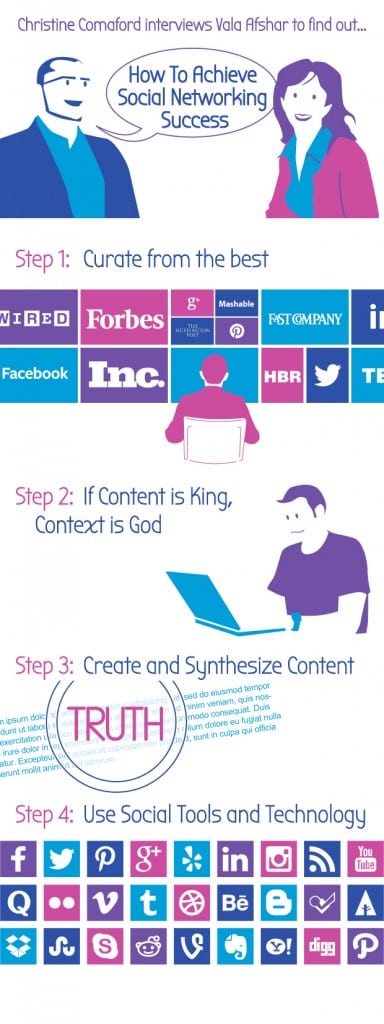
Why We Buy: The 3 Social Selling Factors That Make Or Break A Sale [Infographic]
September 16, 2013
Become A Social Media Rock Star In Four Easy Steps [Infographic]
October 10, 2013
Image Credit: nerdfitness.com
My favorite South Park episode is called “Gnomes.”[i] Here’s the gist of the story, as I remember it.
Tweek’s underpants are being stolen. He has only one pair left.
Tweek invites the boys to sleep over and catch the thieves in the act. In the wee hours of the morning, the boys spot a gnome sneaking into Tweek’s bedroom and stealing his last pair of underpants.
“Why are you stealing my underpants?” Tweek shrieks. “That’s my last pair!”
The gnome replies, “It’s all part of our business plan.” The boys accept the gnome’s invitation to follow him to his headquarters and learn about their business.
When the boys arrive at the gnomes’ headquarters they see piles and piles of underpants, all shapes, sizes, colors, and styles. They are heaped in huge piles everywhere. Gnomes scurry to and fro, pushing enormous carts of underpants around.
“What are you doing with all these underpants?” the boys ask.
The gnome confidently replies, “Oh, this is just the collection phase: Phase 1.”
“What is Phase 2?” Now the boys are getting really curious.
The gnome doesn’t know, so he introduces them to the CEO gnome, who fires up a PowerPoint presentation.
“We have a three-step plan for our business,” the CEO gnome proudly says as he clicks to the first slide. It says, “Phase 1: Collect Underpants.”
He clicks for Phase 2, which we see has no strategy—just a giant question mark. Phase 2 is blank.
He clicks again for Phase 3, and the slide reads, “Phase 3: Profit!!!” The gnomes cheer as the CEO reads this last step aloud. There is much rejoicing.
Too bad the gnomes will never reach Phase 3. Without Phase 2, they’re toast.
Sound familiar?
Compelling Vision or Vague Concept?
How many loyal workers go about their business but have no idea why they do what they do? The gnomes themselves do not understand their own business plan, or why they steal underpants. This is identical to a business where team members do not understand the vision or how to contribute to it. That business, just like the Underpants Gnomes Underwear Enterprise, will never move to the next inflection point—not for all the underpants in the world.
We have a clarity issue here; how exactly do we move from stealing underpants to profit? That’s key—that’s really all that matters to get to the gnomes’ endgame. As it stands they simply have a cave full of underpants. No sales, marketing, distribution, target market, merchandising, you name it.
Profit? That’s a pipe dream. Ain’t gonna happen.
Do you know your company vision? Do your team members know it? Do they feel emotional about it?
The answer to those three questions can stall a company’s ability to create aSmartTribe and stunt their growth at the current inflection point. When my team does a Cultural Assessment at a company, often the first questions we ask each of the interviewees are about the company vision and their alignment with it. We’re not looking to see if the vision is almighty and powerful. We’re looking to see if there is one at all, if people can articulate it in their own words, and if they are engaged by it. We’re looking for clarity. It’s that simple . . . and yet that difficult.
The 3 Types of Clarity
Clarity is crucial in both vision and communication. Clarity can also be an act of omission—what we choose to be explicit and implicit about. This choice sets up the person we’re interacting with to succeed or struggle—and sometimes this person is oneself.
Being clear is essential to leading. When we’re clear we feel aligned and energized, and our team feels motivated because they have explicitly stated expectations. So why is being clear sometimes hard? Because being truly clear means we need to take the time to discover what we need, to articulate it clearly, and to be sure the other party understood our communication.
The meaning of the communication is what the other party understood, not what you said, or intended to say, or “really meant.” You are responsible for making sure that the receiver understood, and if they didn’t, to try, try again.
Clarity has three domains:
- Clarity of our words (saying what we truly mean or expressing what we truly need)
- Clarity of our vision and plan (where we are now, where we want to go, and how we are going to get there)
- Clarity of our intentions and energy (embodying and modeling the outcomes we want for our team)
Let’s look at clarity of vision and plan today, since that’s where the gnomes are struggling.
Clarity of Our Vision and Plan
In my previous book, Rules for Renegades, I talked about how an MBA is optional but a GSD (Get Stuff Done) is essential. To ensure you reach the nextinflection point it helps to make your brand = results. Mastering the skill of clarity in terms of communicating your vision and plan is crucial so your team will know where you are now, where you want to go, and how you plan to get there.
For example, the Underpants Gnomes would’ve benefited from a plan that included exactly how, once collected, the underpants would be marketed and distributed to retail/web/catalog outlets, how orders would be fulfilled, how annual revenue targets would be achieved, what the costs of goods sold would be, and more in order to get to their glorious profit goal.
To take this a step further, a clear mission, vision, and values statement will grab hold of your team’s emotions and provide motivation to excel.
Need some clarity of vision? Download our Leading From The Inside Out kit here.




